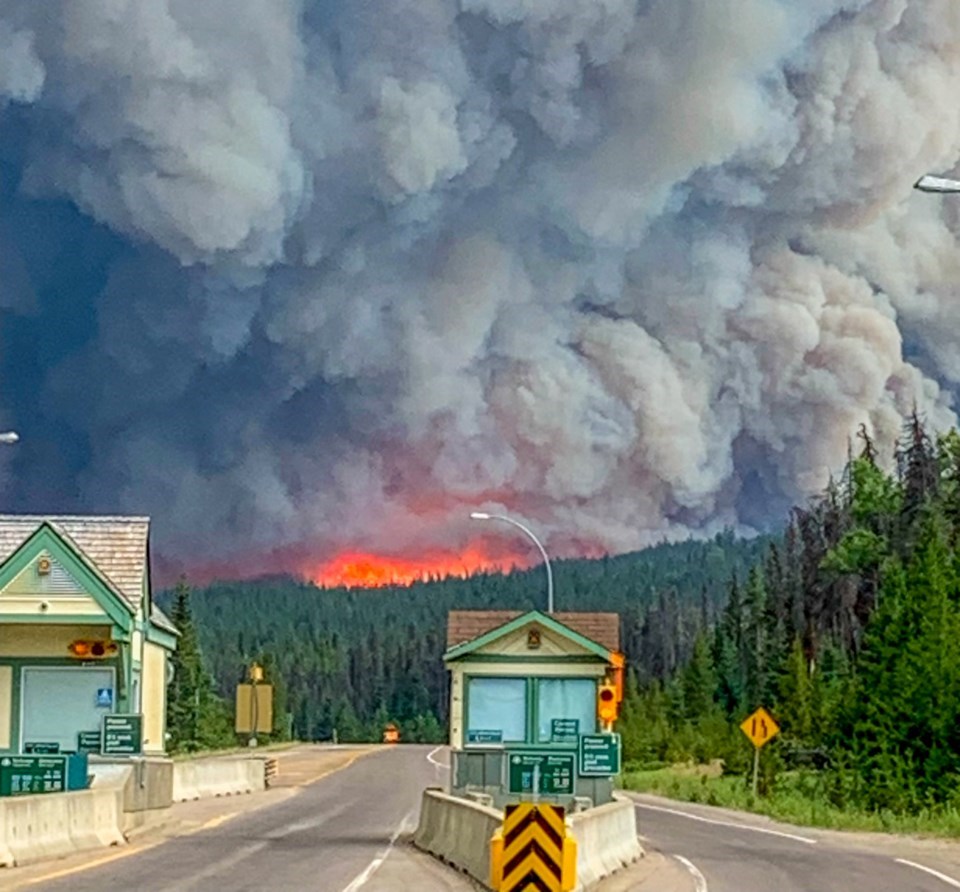When I visited Whistler this summer and smelled the smoke from wildfires burning not far away, I wondered when this prosperous, world-famous village will be destroyed by fires like those that in recent years have engulfed Jasper, Fort McMurray, Kelowna, Slave Lake and many other smaller settlements in Canada’s West.
The question is not whether but when Whistler will suffer this fate. The village is surrounded by forests that are dry and combustible during increasingly hot summers. The flames could be started by lightning strikes, careless smokers and campers, automobile accidents, winds causing trees and branches to fall on electric wires, or even fires in Whistler homes and restaurants.
Much has been done to prevent such a calamity. “FireSmart” policies and a range of other policies in Whistler and other villages and towns in Western Canada have led to the removal of flammables around buildings and nearby forests, the use of metal roofs and fire-resistant sidings in old and new buildings.
But there’s a strong case for supplementing all this with regulations requiring the installation of sprinklers on all buildings exposed to embers from nearby forest fires because, as National Geographic explains, “Windborne embers can float miles ahead of a fire front, sparking spot fires wherever they land and posing a major risk to structures built near wilderness.” A recent B.C. study concluded that the devastating fires that hit the Kelowna and Shushwap areas last year were largely ignited by falling embers.
To combat the devastating effects of wind-borne embers, the BC Wildfire Service and similar firefighting organizations operate trailers called “Structure Protection Units (SPUs), which contain pumps, hoses, sprinklers and water delivery attachments and tools that move around the province during wildfire season. But the resources available to firefighting forces in British Columbia and other provinces clearly have not been sufficient either to control forest fires or to use sprinklers to protect villages.
Recognizing this, in 2021 Doug Wilson, fire chief of the B.C. town of Logan Lake, initiated the installation of sprinklers on the roofs of buildings in his town. The next summer, when wildfires swept through forests near Logan Lake, his policy paid high dividends. According to the town’s mayor, sprinklers installed on 400 buildings in the community “helped save” the town. A pilot project in Banff is offering sprinkler kits to residents whose homes are at risk. A special hose that attaches to the outdoor faucet leads to a small sprinkler that goes on the roof.
Although the case for regulations mandating the installation of sprinklers is strong, some important issues need be settled before they are adopted.
In some towns, water pumps and pipes may not be able to supply all sprinklers at the same time. This problem could be overcome by operating sprinklers in rotation, area by area, starting days before the arrival of embers from an approaching fire. Insufficient water supplies might necessitate the building of reservoirs. Buildings not connected to municipal water systems could be required to install storage tanks.
The cost of compulsory installation is an obvious problem, but there are several ways to deal with it. Owners of buildings could be required to cover the costs on their own, just as they now pay for the cost of new construction caused by regulations mandating walls and roofs with high insulation values and other building standards involving wiring, gas pipes, fuses, valves, sewers and so on. And, after all, if their building doesn’t burn down, they are the main beneficiaries.
Or provincial and municipal governments could cover all or part of the cost. Sprinklers would reduce their future costs helping fire victims who lose their homes, pets and irreplaceable family possessions. Greater use of sprinklers could also reduce the estimated total cost of wildfire suppression, which in 2023 in British Columbia was just over $1 billion. The one-off cost of installing sprinklers should be only a small fraction of such provincial firefighting budgets.
Insurance companies also have a strong incentive to see defensive measures taken against wildfires. In 2016 they settled claims for $5.96 billion in and around Fort McMurray. Last year they paid out $3.13 billion in the Okanagan Shuswap area of B.C. If sprinklers lowered those bills even by a small percentage, the tens of millions of dollars this would represent would cover the cost of installing a slew of sprinklers. Incentives built into insurance contracts should take that into account.
British Columbia’s next fire season is less than eight months away. There’s no time to waste in discussing, passing and quickly implementing regulations leading to the installation of sprinklers in places facing high risks from airborne embers.
This article was originally published in the Oct. 24 edition of the Financial Post.
Herbert Grubel is emeritus professor of economics at Simon Fraser University.




